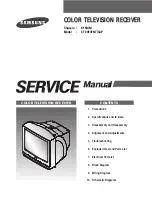
10
IRD User Helpful Hints
Frequency
Enter the IRD input frequency as accurate as is known.
If the exact frequency is not known, the entered
frequency should be accurate within the selected
acquisition Bandwidth. Valid values, 950 MHz to 2150
MHz.
Symbol Rate
Enter the symbol rate being received.
Viterbi Rate
Select the code rate being received.
Acquisition Bandwidth
The default acquisition bandwidth is 4MHz. The
acquisition bandwidth is used to limit or expand the
receiver scanning range.
The user can select the desired acquisition bandwidth
to help find the desired signal. If the user is uncertain
of the exact IRD input frequency to receive, increase
the bandwidth to increase the receiver scanning range.
If multiple signals are close to each other, limit the
bandwidth to limit the receiver scanning range.
The receiver will scan the width of the acquisition
bandwidth from the entered IRD input frequency.
LNB Polarity
LNB Polarity option changes the LNB voltage that is
supplied on the LNB input connector.
When Vertical polarity is selected, the LNB voltage is
approximately 13VDC. When Horizontal polarity is
selected, the LNB voltage is approximately 17VDC.
Satellite Band
The Satellite Band option is used by the IRD to enter
the LNB Local Oscillator (LO) frequency. This
frequency is used by the IRD to determine the
frequency of the channels in the transmission at the
input to the IRD.
The IRD is programmed with the following LO
frequencies for the given bands.
1. C Band:
5.15 GHz
2. Ku Low Band
9.75 GHz
3. Ku High Band
10.6 GHz
•
Selecting Ku High will also output a 22KHz signal
on the input connector to select the Ku High LO in
the LNB. This band is also the default condition.
If other than the above LO frequencies are being used
by the LNB, the User option can be selected to enter
the custom LO frequency.
The IRD must have the correct settings to lock onto the
initial signal (home channel). The following are
required: LO frequency or Band, IRD input frequency,
LNB polarity, Symbol rate and Viterbi rate. Once the
home channel is found, the Network Information Table
(NIT) in the data stream supplies further information if
available. The NIT Satellite Delivery system descriptor
frequency is the frequency on which the satellite
transmits the multiplex (Transponder Frequency).
The formula to calculate the IRD input frequency is
based on the NIT satellite delivery descriptor frequency
(Transponder Frequency) and the Local Oscillator (LO)
frequency:
IRD input frequency
=
Transponder Frequency -
LO Frequency (GHz)
For C Band only, use the Eq.:
IRD input frequency
=
LO Frequency (GHz) -
Transponder Frequency
Note: LO may be User Defined or one of the standard
bands selected by the operator.
Example: Suppose that the Transponder Frequency is
12.3 GHz, and Ku-High is set. From the table, Ku-High
has an LO frequency of 10.6 GHz. The NIT frequency
descriptor would be 012.30000.
IRD Input Frequency = (12.3 - 10.6 ) GHz = 1.7 GHz
The IRD will tune to 1.7 GHz.
Receiver Mode
Receiver Mode selection allows the user to see the
relative signal strength form the LNB. This feature can
be used to sight the dish antenna to a desired satellite.
Normal setting is selected to use the IRD as a receiver
decoder. Install setting is selected to view the signal
level. If Install is selected, the IRD will stop receiving
and decoding functions, thus no video, audio, or data
will be outputted.
LNB Voltage
LNB Voltage on or off selection allows the user to turn
off the LNB voltage when multiple CSR820s are
connected to one LNB or when the IRD does not need
to provide the LNB power. This feature negates the
need to use DC block in the network.
Service Selection
The service name will only appear if the service name
is available in the SDT table in the signal.
Select Video
All the video programs available in the selected service
will be displayed. This feature allows the user to select
the desired video program within the selected service.
Select Audio
All the audio programs available in the selected service
will be displayed. This feature allows the user to select
the desired audio program within the selected service.
Select Teletext
Select Teletext screen will only appear when the video
mode has been selected to PAL. This feature allows
the user to turn on or off the teletext being received.






































